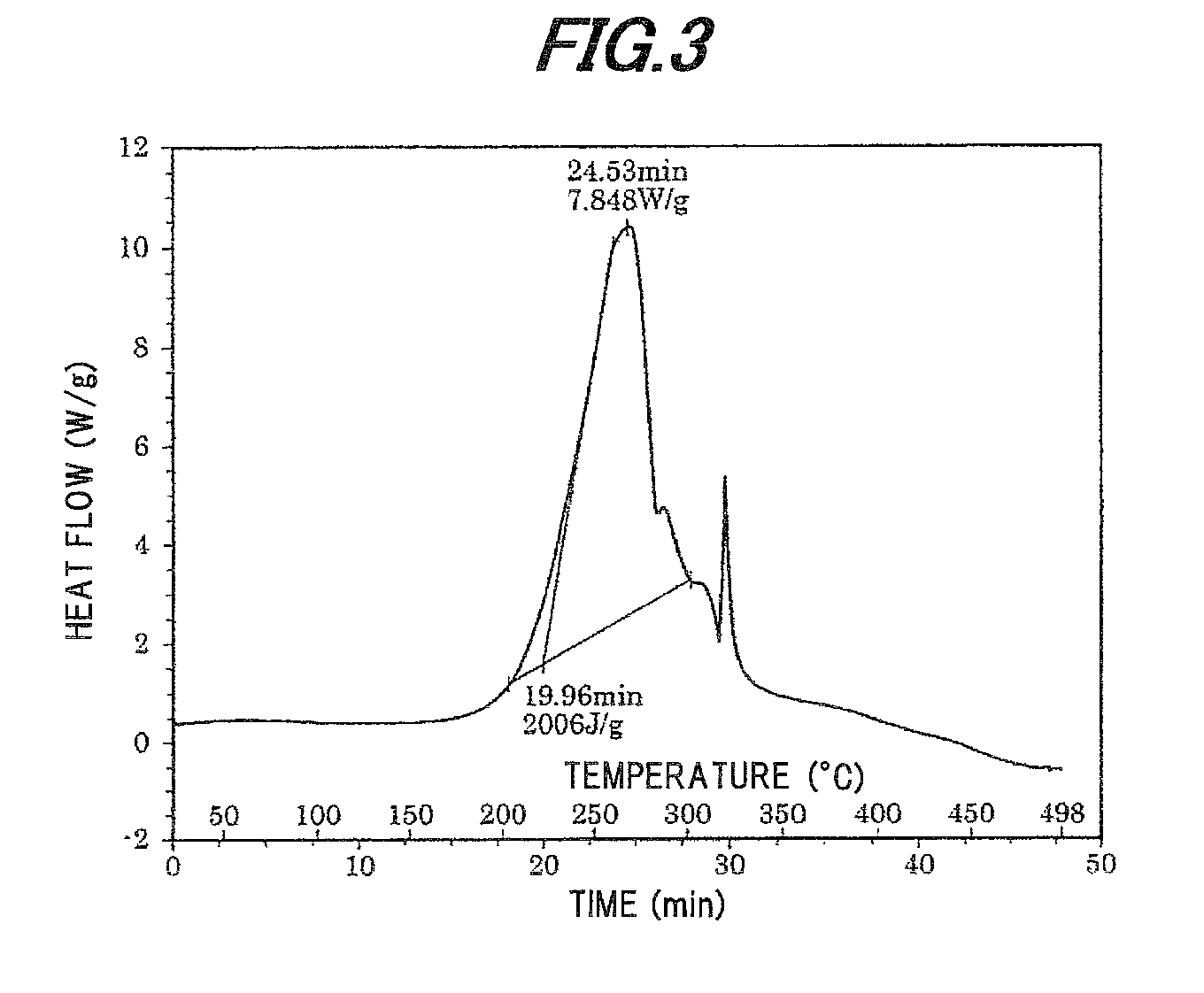Metal fine particle for conductive metal paste, conductive metal paste and metal film
a technology of metal fine particles and conductive metal paste, which is applied in the direction of conductors, cellulosic plastic layered products, conductors, etc., can solve the problems of insufficiently high conductivity, increased cost, and reduced product quality, and achieves the effect of reducing the required calcination tim
- Summary
- Abstract
- Description
- Claims
- Application Information
AI Technical Summary
Benefits of technology
Problems solved by technology
Method used
Image
Examples
example 1
[0066]Ag fine particles with a particle size of 9 nm on which about 15% by mass of triethylamine is adsorbed were synthesized. The result of powder X-ray diffraction measurement of the fine particles shows that a diffraction peak of FIG. 1 showing a fcc structure of metal Ag was obtained, and thus, it was confirmed that the fine particle is Ag. The particle size of the Ag fine particle was confirmed by the results of FE-SEM observation shown in FIG. 2. The result shown in FIG. 3 was obtained from DSC measurement of the Ag fine particle, and heat generation of 2000 J or more per unit mass (g) of the Ag fine particle was confirmed at a DSC heating atmosphere temperature in a range of 200° C. to 300° C. The Ag fine particles were dispersed into a toluene solvent so that the metal content is 65% by mass, thereby making a conductive metal paste. A surface a Cu substrate (1 cm×1 cm) was cleaned with 1% dilute sulfuric acid solution, the conductive metal paste was applied thereto by using ...
example 2
[0067]The conductive metal paste of Example 1 was applied to a glass substrate (2 cm×2 cm) by the spin coat method, and calcination was carried out at 250° C. for 30 minutes in the electric furnace. The film thickness of the metal film after the calcination was about 0.27 μm. The result of the conductivity measurement of the metal film was 6 μΩcm. The result of the adhesion evaluation by the tape test was that the Ag film was not peeled off. The result of the film adhesion by the micro-scratch test was 27 mN.
example 3
[0068]The conductive metal paste of Example 1 was applied to a polyimide substrate (2 cm×2 cm) by the spin coat method, and calcination was carried out at 250° C. for 30 minutes in the electric furnace. The film thickness of the metal film after the calcination was about 0.27 μm. The result of the conductivity measurement of the metal film was 6 μΩcm. The result of the adhesion evaluation by the tape test was that the Ag film was not peeled off. The result of the film adhesion by the micro-scratch test was 20 mN.
PUM
| Property | Measurement | Unit |
|---|---|---|
| temperature | aaaaa | aaaaa |
| particle size | aaaaa | aaaaa |
| particle size | aaaaa | aaaaa |
Abstract
Description
Claims
Application Information
 Login to View More
Login to View More - R&D
- Intellectual Property
- Life Sciences
- Materials
- Tech Scout
- Unparalleled Data Quality
- Higher Quality Content
- 60% Fewer Hallucinations
Browse by: Latest US Patents, China's latest patents, Technical Efficacy Thesaurus, Application Domain, Technology Topic, Popular Technical Reports.
© 2025 PatSnap. All rights reserved.Legal|Privacy policy|Modern Slavery Act Transparency Statement|Sitemap|About US| Contact US: help@patsnap.com


